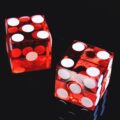We’ve all found ourselves entranced by the colourful lights, engaging sounds, and thrilling sense of anticipation that comes with playing slots. But have you ever wondered about the psychology behind these exciting games? Interestingly, the design elements of slot machines influence player behaviour significantly more than you may realise.
Colour Association & Perception
Red, the colour most frequently seen in casinos and slot machines, is not an arbitrary choice but motivated by psychology. The colour red is known to bring about feelings of excitement and stimulation, two emotions that go hand-in-hand with the thrill of gambling. Also, warm colours like orange and yellow are used to promote a feeling of happiness and energy.
Sensory Stimulation
Besides visual aesthetics, other elements contribute to the overall seduction of slot machines. The sounds that these machines make, for example, play an integral role in drawing people in and keeping them hooked. The chiming sounds coupled with the anticipation of a win create a potent mix of reward and excitement.
Intuitive Design & The Illusion of Control
Many players prefer slot machines over other forms of gambling because they are straightforward, intuitive, and give a feeling of control- even though the outcome is entirely up to chance.

The simple design, interactive elements and accelerated play contribute to a sense of control, leading to longer gaming sessions and increased betting.
Losses Disguised as Wins
One of the powerful psychological tools employed by modern slot machines is ‘losses disguised as wins’ (LDWs). Basically, these are instances where the player gets less than their original wager but is still celebrated with flashing graphics and triumphant sounds. This could push players to continue spinning the reels, despite the fact that they are losing money over time.
Near-Miss Outcomes
Finally, let’s look at the near-miss effect, a phenomenon that can also greatly impact our gambling behaviour. In slot machines, when two reels match on a payline but the third narrowly misses, this is known as a near-miss. Such outcomes make people believe they were close to winning and encourage further plays.

With its combination of colour psychology, sensory stimulation, intuitive design, and cleverly disguised losses, it’s no wonder that slot machines are among the most popular forms of gambling worldwide. Even though we now understand the shrewd methods through which these machines influence us, the allure of slots arguably remains undiminished.
Understanding the psychology of slot machine design helps us appreciate the depth and complexity behind these seemingly simple games. Perhaps most importantly, it helps us to gamble more responsibly, remind ourselves that the feeling of control is an illusion, and always play within our means.
Jessica has a flair for writing engaging blogs and articles. She enjoys reading and learning new things which enables her to write different topics and fields with ease. She also strives to break down complex concepts and make them easy for anybody to comprehend.





